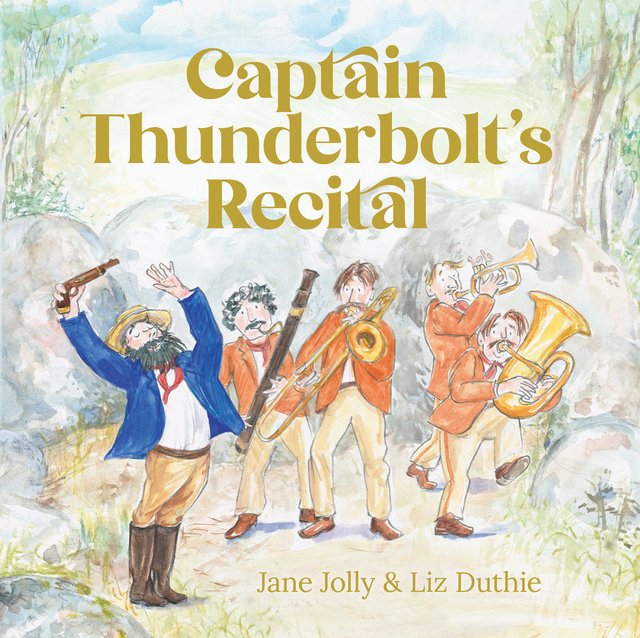Captain Thunderbolt’s recital by Jane Jolly. Illus. by Liz Duthie

With several pages at the end of the book with a potted history of Captain Thunderbolt and his deeds, this engaging look at an historic incident in our bushranging past will have instant appeal. Most will have heard of Ned Kelly but very few will have heard of Thunderbolt roaming northern New South Wales, nor many of the other possibly 2000 bushrangers who tried their luck on the roads in the nineteenth century.
With rollicking illustrations the story unfolds as Thunderbolt emerges from his hideout with his tin whistle and does a jig, amusing his faithful horse, Spirit. He looks into his empty purse and decides he needs money for a feed for both he and Spirit. He sees an old creaking wagon on the road, and spies four mustachioed men singing in a language he can not understand. A shot passes their ears and they stop the cart, quivering at the sight of the bushranger. He peers into their cart and sees a variety of musical instruments and tells them that they must play for him and pay him to be in the audience. As they hand over their money, they hear the noise of a group of horses coming down the road. Thunderbolt hides in the big drum and the troopers ask their questions and the band lies about seeing a bushranger and the troopers keep going.
Thunderbolt orders the men to play and they do so hesitantly, Thunderbolt as the conductor. They march around, Thunderbolt enjoying himself immensely. After a number of songs and jigs, he asks for money, and they tell him how poor they are. He asks for their names and addresses, convinced that Spirit will win a horse race and he will be able to refund their money.
Surprisingly, they do get their money returned but not because Spirit wins a race.
A funny story of an Australian bushranger will intrigue the readers and interest them in this saga in Australia’s past. Jane Jolly’s text is easy to follow, succinct and informative. She manages in a few sentences to give a broad view of the bushranger and what he does, how he is pursued by troopers and how he uses other people to help in his escapades.
Liz Duthie’s illustrations reflect the humour of the story, allowing readers to see the silliness of the situation, and laugh at the man as he scares a group of travelling musicians. The background is wonderfully portrayed, and I love the endpapers with their images of the dancing bushranger and his horse, jigging along to the band. Teacher's notes are available.
Themes: Bushrangers, Humour, Australian history.
Fran Knight